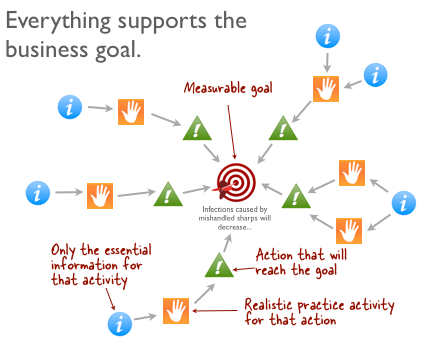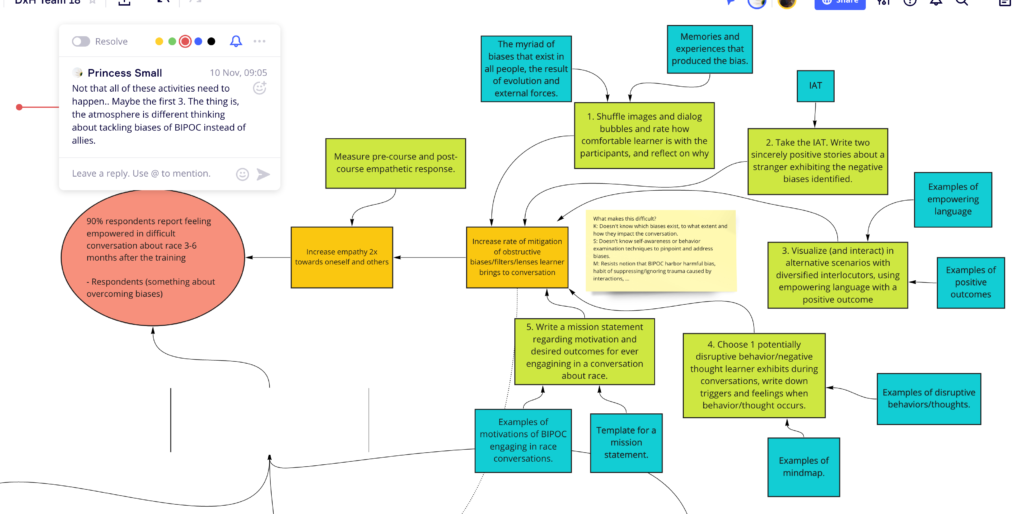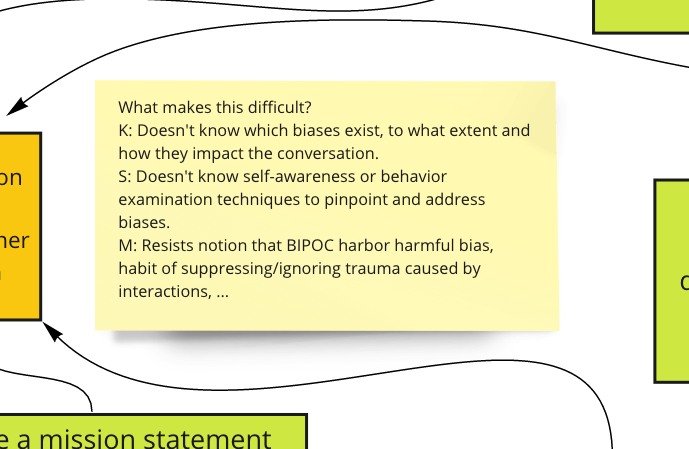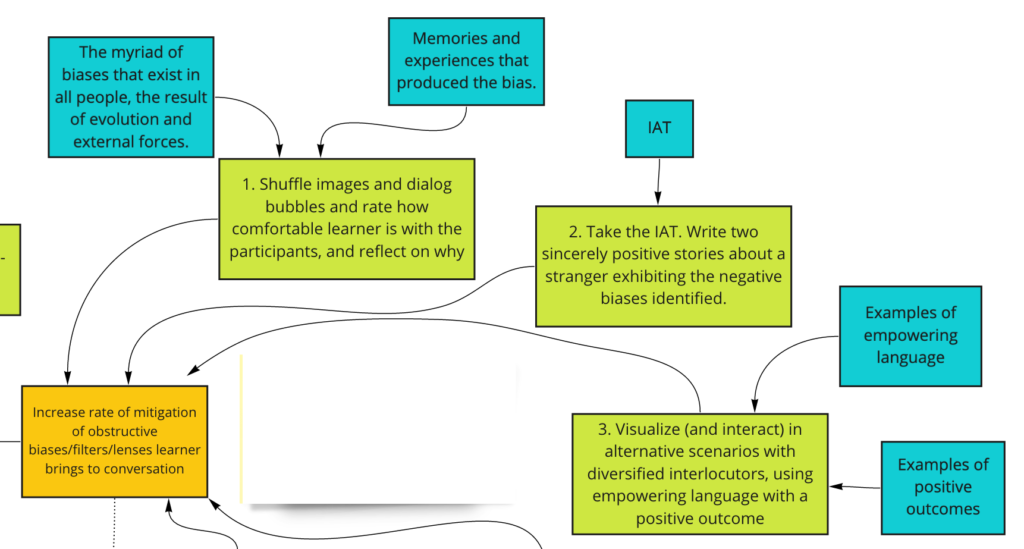ID Process: Action Mapping
Goal:
Use action mapping to discover engaging, feasible activities to decrease interference of biases and increase empathy to better engage in difficult conversations about race.

Solution:
Action mapping! My DesignxHumanity instructional design team used a Miro board to (1) map out the desired behavior change, (2) identify possible solutions and activities to practice that behavior, and (3) collate the minimal information required to practice. This is the essence of Action Mapping. In addition to the information I already had regarding bias, I gathered more by watching a few TED Talks on overcoming bias to get an objective take on what types of biases lurk in our interactions with people, and then actionable ideas for learners. I wrote it out on paper and then added it to the Miro board.
Outcome:
I did this in about one sitting, and the feedback from my much-more-knowledgeable colleague was encouraging.

The red circle is the outcome for the entire course. We want BIPOC (Black, indigenous and people of color) interlocutors to feel empowered while participating in what may be a very difficult conversation about race. The original course was about active listening in racially-charged conversations, but it morphed into this. One of the hallmarks of active listening is understanding one’s own filters and biases in preparation to receive what the speaker is saying. I volunteered (was chosen?) to tackle this module.
The orange rectangles are the action item that will enable the overall course outcome. This is a bit tricky, as there are two: one leading into another. I thought it was appropriate to make clear how these things relate and how we can attempt a measurement for something that is subjective. The tan rectangle is a special feature where we identify what factors make achieving this goal difficult. This is where I would need a SME to come in an explain the psychological hangups people experience around unconscious prejudicial feelings.

Then we get to the green rectangles which are the practice items to achieve the sub-learning outcome. The activities need to have pin-point precision to truly pick apart and directly address the knowledge and skills gaps.

I love writing about activities, so this part was the most fun for me. I put them in an order I thought made sense in the progression of one’s ability to empathize and engage. First there’s a discovery activity, then practice actively thinking positive thoughts (flipping the script, so to speak), and finally, applying that positivity to the conversation act. I have two other possible activities. In no way do I believe all five activities are necessary, and even now, I welcome input from my teammates.
The teal boxes are the least amount of information I thought the learner needed to complete the activity. This was slightly difficult because this module is on a very soft skill — it’s all very much a personal, subjective exercise. So much of the information is in the form of “examples”, where I hope we don’t tell learners what to think or feel, but give them permission to think and feel at all. We want them to consider things, but not necessarily adopt them. Even in the first activity, the information is ideally generated by the learner.
Lessons learned:
- I thought this was a great way to conceptualize the training. It teaches you to zero in on your desired behavior and, hopefully, get rid of the fluff that can distract you the ID and even your SME.
- This is extremely learner-centered. We’re always talking about learner-centeredness in training and models, but I felt like by focusing on the doing, the action item, and breaking it down into tiny action items, I could visualize the learner’s progression. The “what makes this difficult” also brought home the needs of the learner.
- Starting out was not as easy as you might think. Maybe it was our meetings at 8pm, and maybe it was having too many options or the topic being somewhat a soft but also a hard skill…but it was difficult getting off the ground with this at first. My advice is to read Moore’s blog, watch her videos, and then take it one step at a time. And maybe choose a topic that is in fact very hands-on.
- As a language skills educator, I would like to use this. In fact, in THIS video, Moore uses language in her example of throwing someone in the deep end. The only problem is that the instructor would need to be either bilingual or get help.
Action Mapping is about 30 years old, but it’s still shaping the training and learning world. How have you used it? Would you consider using it in the future? What issues do you anticipate?
